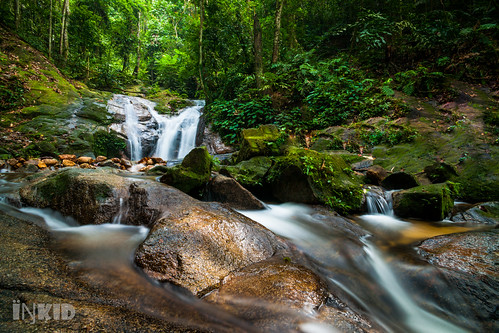I had been talking about using a tripod in my previous post but what happen if want to go for low light photographing but do not want to use a tripod? Yes, sometimes its not practical to use a tripod in certain location such as when you is in a busy places as in the night market, fun fair, public transportation or even at the indoor building where its full of people busy walking around. We just do not have enough of space to set up a tripod!
So what is the answer for this question? Yes, you can use flash setup such as your in-camera build in flash or any external flash gun but its still a little troublesome for me as the picture with direct flash just not right for me. Wireless flash is good but again you need to set it up, need times and you do need a flash stand or somebody to hold the flash for you. Again its very troublesome especially when you are alone travelling around. I believe many photographer do want to travel as light as possible and can easily move around after they take a picture. And yes, using higher ISO with a fast prime lens is just the correct answer here for me.
A fast prime lens that allow you to use f2.8 or below as f2 or f1.8 are just great for low light photograph. There are many type of fast prime lenses you can get in the market now from 14mm to 200mm that come with big aperture. It depends on individual preference on what kind prime lens suit you the most and of course suit your pocket, where most of the prime lenses are not cheap. So you better choose correctly before investing into a prime lens that suit your need. My personal preference when come to low light photographing are always the 50mm prime! When i attached it to my A900, i can just photography almost everything from landscape to portrait, everything just look great!
For the most part, 50mm lenses are cheap. A brand new Sony 50mm F1.8 lens can be had for around RM500. If you’re going for the higher grade ones, then expect to dish out a couple hundred ringgits or more depending on the brand and availability such as the Sony 50mm f1.4 for around RM1500 or better still the new Sony Carls Zeiss 50mm f1.4 that cost around RM5000! In general, all you really need is one that is around F1.8 as that aperture is wide enough for most uses and you may even find yourself closing that up at times. If you can get that level of depth of field for that cheap in order to single out your subjects in your photos, why not go for it?
50mm lenses mimic the field of the human eye and therefore will translate into your photos. This is partially why they are called, “normal lenses.” Also referred to as standard, when combined with good photographic techniques it can make people feel more as if they are actually in the moment you are capturing. They give very good quality images. For its price, the quality 50mm lens gives matches a professional lens. Since it is a prime lens, you will experience the ‘actual’ or capture sharpness. A 50mm lens makes tack sharp images, especially for its price. The colour rendition a 50mm lens gives you is way better than that of a kit lens.
You don’t want to feel that you can’t take your camera out because it’s heavy. You want it compact. That’s another reason you should buy a 50mm. Since there are only fewer elements inside a 50mm lens, they are lighter than other primes. And It gives you great bokeh that everybody loves! The bokeh is incredible. Apart from letting more light into the camera, wide apertures create a shallow depth of field. You can make ‘dreamy’ effect in your photos; that, you don’t have to rely on photoshop, or any other photo editing software, to create it. I mean, who doesn't love the out of focus circles and blur background in their photographs, right?
The biggest disadvantage of zoom lenses is that they zoom. This isn't a contradiction and zooming encourages photographers to be lazy. Not close enough to your subject? Then just zoom in. Too close? Zoom out. It’s convenient, but it doesn't teach you anything about focal lengths. With a prime lens, you can’t zoom. You have to physically get closer or further away from your subject. The perspective doesn't change. You become intimately acquainted with the physical characteristics of your lens.
Below are some pictures that i took with 17mm prime and 35mm prime in low light conditions:-
